It can sometimes seem very obvious why an artwork needs restoration. If a painting has a tear, you know it needs repaired. Or if an artwork is so dirty you can no longer see specific details, you know it needs cleaned. This is indeed correct, but when a painting arrives into our studio, instead of just looking at the obvious work needed we look at the painting as a whole.
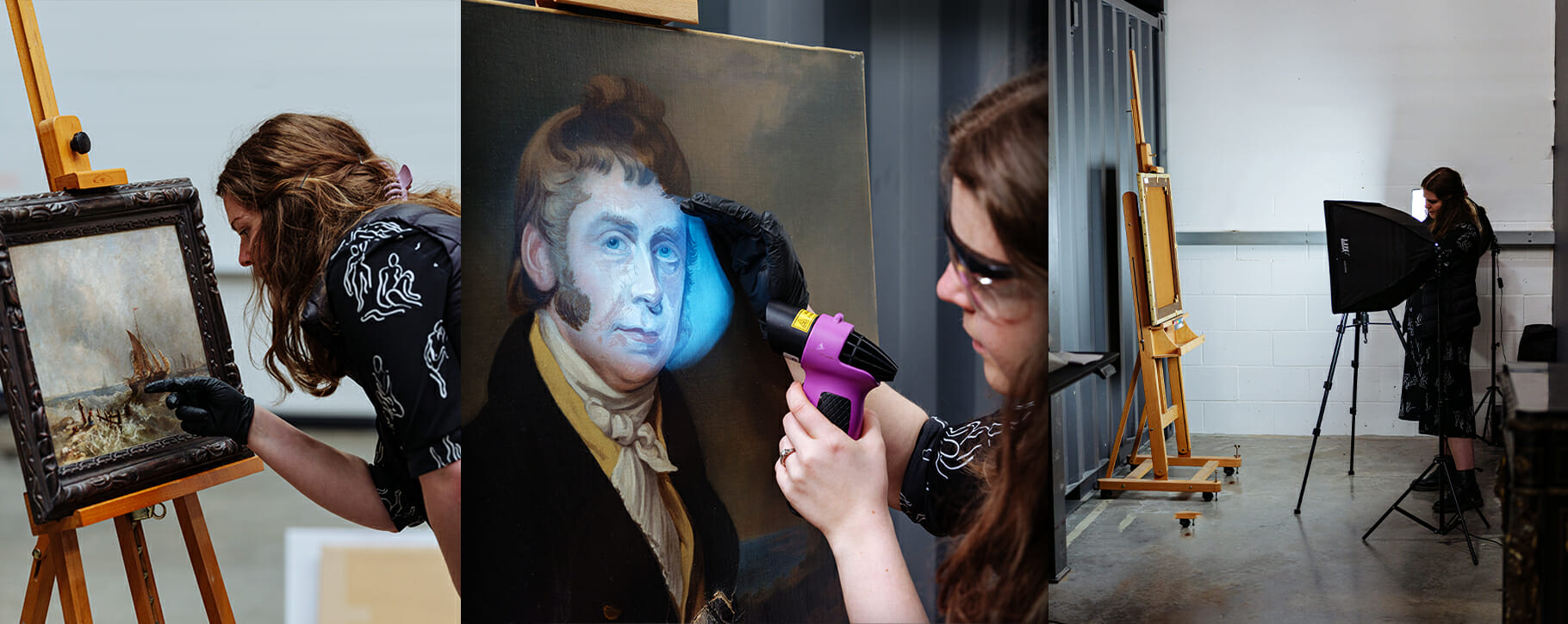
If you’ve looked through the case studies we’ve put together on our website, you’ll know that when we receive a painting into the studio, our first priority is to make a full assessment of its condition.
Even if a painting has an obvious tear that needs repairing, or looks like it needs a clean only, there could be more stabilisation required than what you can see on the surface.
Our conservators can carry out an in-depth analysis of the artwork that covers:
- Current condition
- Previous restoration or over-painting
- Treatment plan
- Future preservation
It’s vital we do this for every painting, so we can understand what might be causing the artwork to have issues and how it can best be repaired for its longevity. It wouldn’t be possible to achieve a professional and safe restoration without first understanding why the painting needs work.
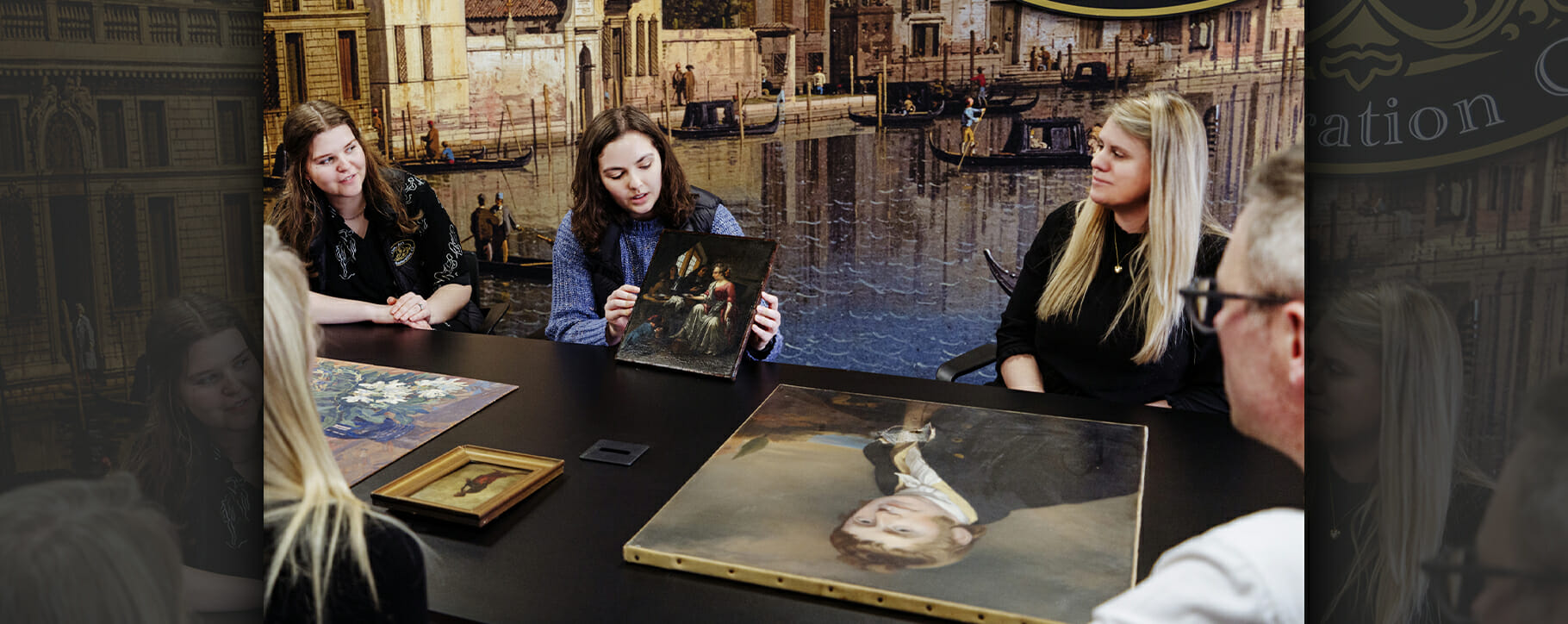
We follow a series of steps to provide a comprehensive assessment of each artwork. Take a look below to see how we find out what restoration work is needed.
What is the current condition of the artwork?
Even if it seems obvious why an artwork needs restoration, like a large tear through the middle of a painting, it’s still necessary to look at the condition of the painting as a whole so nothing is missed.
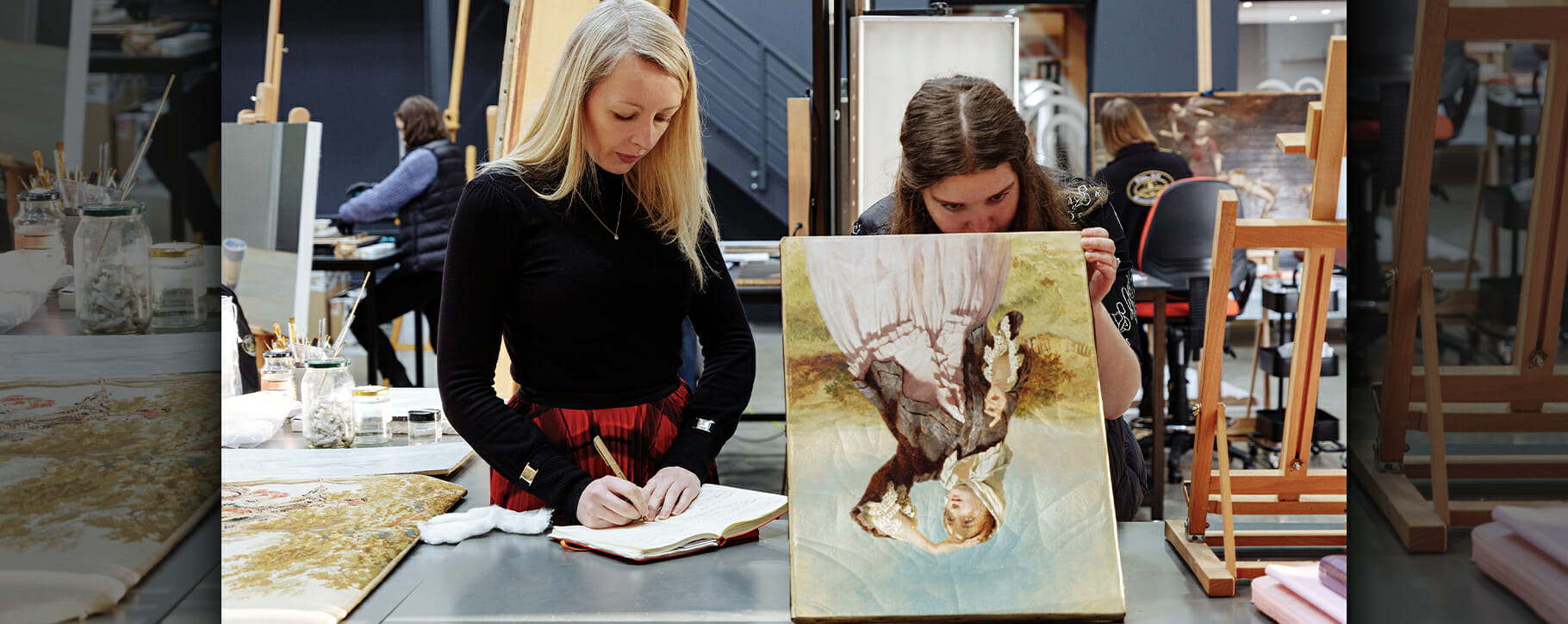
We look at the structure of a painting first and take into account whether there are tears, holes, punctures or missing canvas. Sometimes it is not always easy to see if there is a tear – especially if it is disguised by the detail on the painting, like the painting in the photograph below right. We also check the margins of a painting, to see if they have worn away. If they have, strip-lining may be necessary to ensure the painting is properly tensioned and supported and no more of the original canvas is worn away.
For more information on the structural work needed for a painting take a look here:
Once the structural assessment is completed, we move onto the condition of the painting’s surface and look in detail at the paint layer. Some questions we often ask are:
– Is there any unstable or flaking paint (like the photograph below left)?
– Does the painting have scratches or surface abrasions?
– Is retouching required if there is paint loss?
Another key question we ask is ‘Has the painting been restored before?’
Previous restoration campaigns
There are some key indicators that signal whether a painting has previously been restored. When we look at the back of the painting, we take into consideration whether a painting has been lined before. This will have been necessary, for example, if the painting was badly damaged or was particularly fragile and aged.
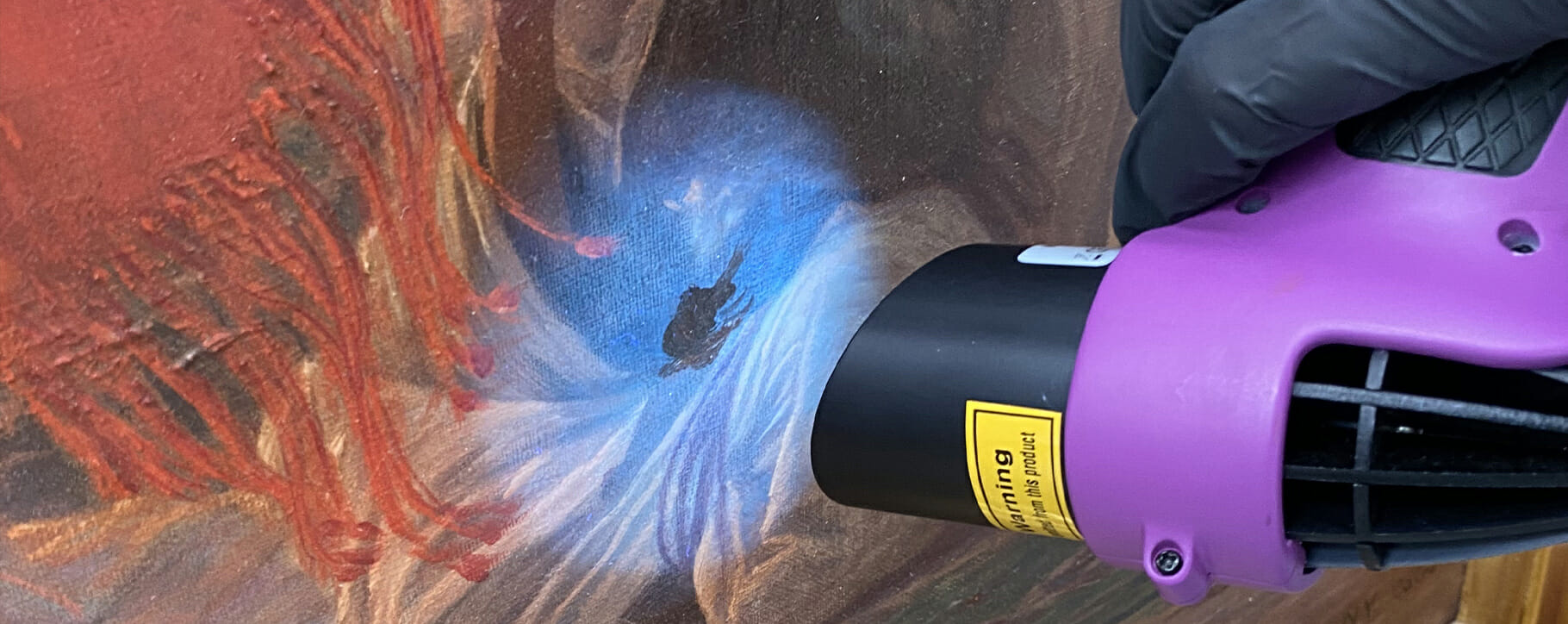
Looking under UV light on the painting’s surface can also flag whether the artwork has previously had any tear repairs, past fills in case of paint loss, and retouching. All of these factors are really important to know and to understand how to proceed.
Paintings that have been previously restored can be restored again – each painting will have an individual treatment plan that takes into account the previous work.
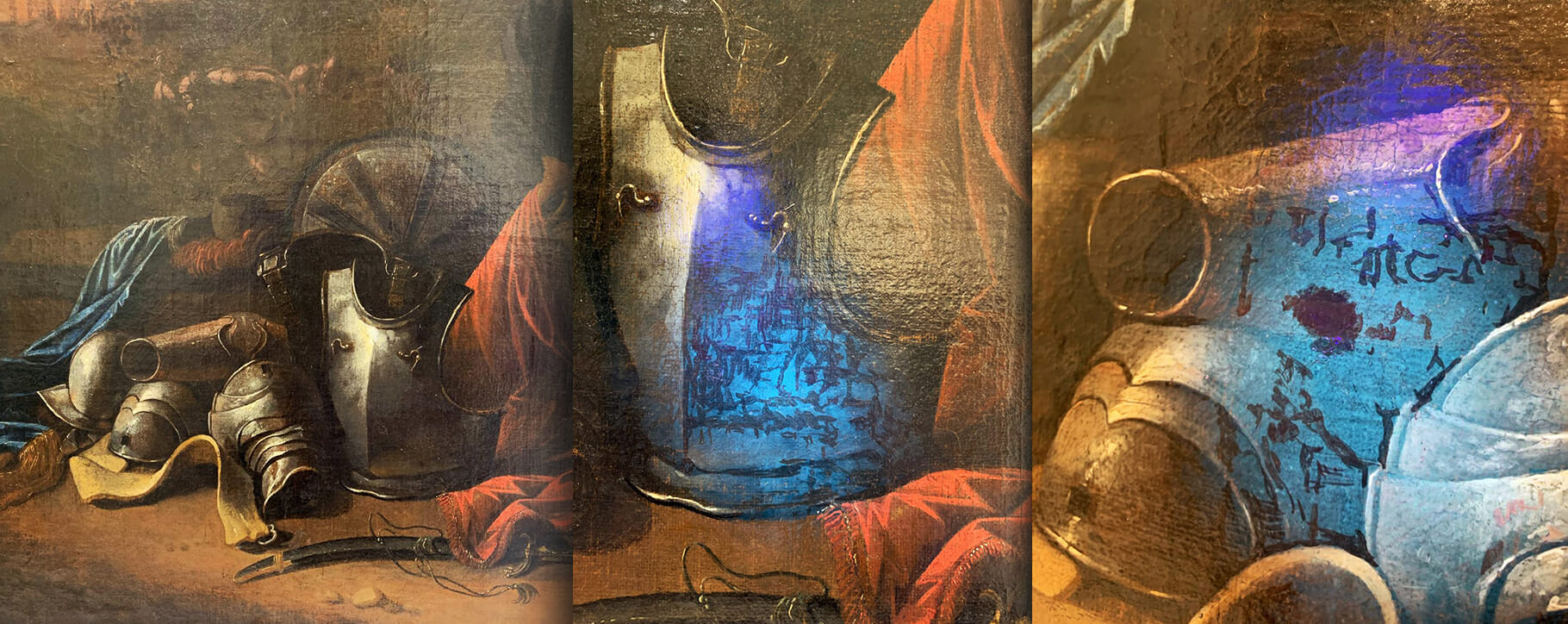
Treatment Required
Once we’ve ascertained the work that a painting requires, we can then tailor that treatment accordingly. For example, with a large tear in a painting, we need to know if lining is necessary after repair to ensure the canvas is fully supported, or whether the thread-by-thread repair or patch will be sufficient.
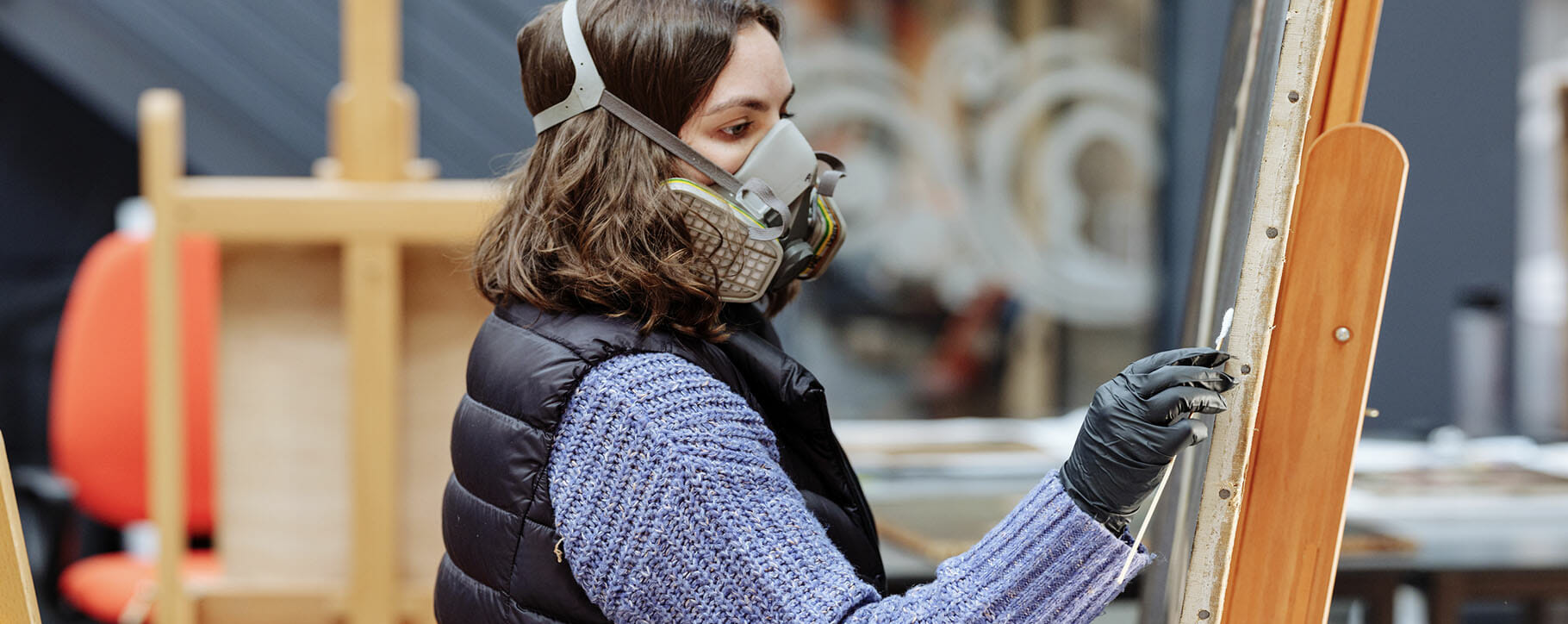
If a painting has uneven and obvious repairs from a previous restoration effort, we can treat the area of concern and integrate it carefully into the painting. In the below photograph, cleaning has uncovered where a painting has had a previous tear repair, but no filler has been applied in preparation for retouching (which was also not completed). After cleaning, we were then able to ensure the tear repair was stable, and continue with the filling and retouching.

Our recommendations for restoration take into account what the painting requires presently, but also any underlying issues that are causing problems – in other words, we treat both the symptom and the cause.
Future conservation
Our aim is to always conserve artworks for longevity, not just providing a ‘this will do for now’ solution.
Where necessary, we will also provide recommendations for better long-term artwork care. This may include suggesting a different frame for our clients if it’s an unsuitable fit, adding glass to a contemporary artwork, or where and how best to display a painting at home. We are always available with any advice, if you would like some assistance learning more about how your painting can be kept free from any accidental damage at home. You’re always welcome to contact us and we can help.
If you would like our advice on your painting, please contact us for our no-obligation help.






